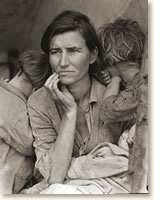Non-Western Art- Ming Dynasty
The Ming Dynasty dated from 1368 to 1644. The early part of this dynasty was marked by cultural restoration and expansion. The Ming Dynasty was when a indigenous Chinese ruling house, or family, returned to power and with it, artists returned to earlier styles of art. Much like the European Renaissance, the ruling powers had a lot of influence on the art of the time. Ming rulers and upper class, like any, wanted to be represented in the best light and praised with local art. Ink-wash and calligraphic art forms were returned to and expanded upon during this time and mastery of the performance of art creation became very important. West Asian and Mongol Yuan dynasty continued to influence the art of the Ming Dynasty.
Due to an increase in supplies and mediums, an increase in patronage of the arts became available. This medallion is one of the few pieces that can be dated to the Ming Dynasty, though the exact timing and artist is unknown. Its guessed that this piece is from the late 16th century or early 17th century. The scene in it details a scholar coming home from travels with four attendants carrying his supplies and a fifth attendant who has rushed ahead to open the gates of the compound. The detail work on the back of the medallion is what helps date this piece to the Ming Dynasty. The choice of scene is similar to others that were painted around the more specific time that it is believed this piece was carved. Scenes like this often were about a spring outing that involved poetry and wine.
My reasons: The detail and beauty of this piece amazed me. Then to find out that the whole sculpture is only 3 3/8 inches in diameter, that blew me away. I couldn’t attempt to do something like this if I was working with something the size of a dinner plate, let alone something so small. The skill and detail intrigued me and the moment I saw it, I didn’t have to look any further for an art piece to feature, not to say I didn’t look, but my decision had already been made.
References:
Department of Asian Art. “Ming Dynasty (1368–1644)”. In Heilbrunn Timeline of Art History. New York: The Metropolitan Museum of Art, 2000–. http://www.metmuseum.org/toah/hd/ming/hd_ming.htm (October 2002) Retrieved on 11/21/11
“Medallion with Return from a Spring Outing [China] (1993.176)”. In Heilbrunn Timeline of Art History. New York: The Metropolitan Museum of Art, 2000–. http://www.metmuseum.org/toah/works-of-art/1993.176 (September 2008)























